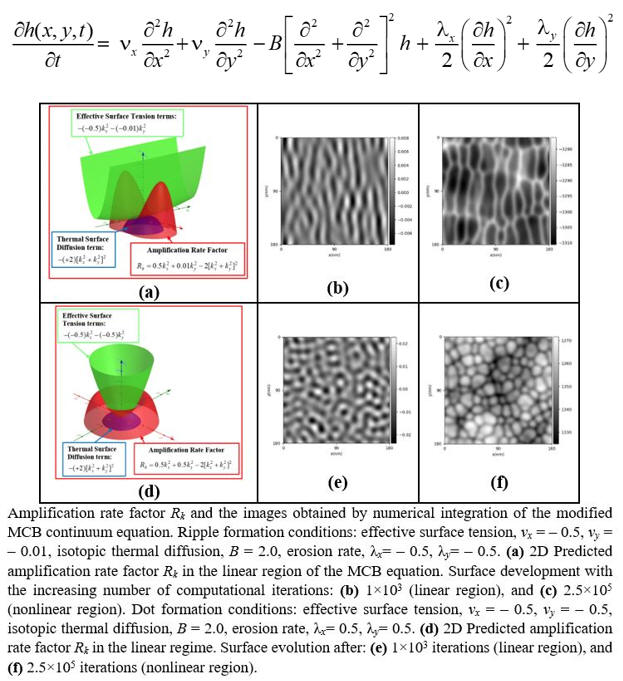Current Research InterestSputtering a solid surface with an ion beam of relatively low energy (order of a few kilo electron volts) can result not only in surface kinetic roughening but also in the self-organization of ordered quasi-periodic nanostructures, such as ripples, dots, and holes under appropriate conditions, as shown in the figure below.
I am studying dynamical non-equilibrium processes, particularly
self-organized pattern formation, on solid surfaces induced by
irradiation with energetic ions. I employ both experimental and
numerical studies to understand the evolution of these structures
with the ultimate aim of being able to quantitatively predict
pattern formation under specific conditions. My focuses on investigating the mechanism underlying ion bombardment induced self-organized nanoscale periodic ripples on monoatomic solid surfaces with fixed experimentally accessible parameters of low ion beam energy, large incidence angle and room temperature. These characterization studies explore and answer key questions about the driving forces behind ripple generation. Linear and nonlinear behaviors are investigated using both experimental approaches and deterministic solutions of a continuum equation which describes the evolution of surface morphology (a special case of Makeev-Cuerno-Barabasi (spMCB) continuum equation) such as below PDE equation.
Experiments are conducted by erosion solid monatomic surfaces
with inert gas ions under vacuum conditions. The resulting
surfaces are then imaged by Atomic Force Microscopy and the
associated micrographs analysed to obtain key parameters
associated with surface morphology such as interface width and
the wavelength of quasi-periodic features. The continuum
equation is evaluated in Fourier space using a custom-written
solver on a High-Performance Computing cluster.
The outcomes of these results will enhance theoretical
understanding of non-equilibrium surface patterning, ultimately
aiming to quantitatively predict the wavelength of
quasi-periodic structures and tune their structural coherence
for potential applications in diverse fields such as
anti-reflective surfaces, optoelectronics, and data storage.
|
||
| Visiting Labs 1- Nanoscale Science and Technology Group Lab, Physics Department, Durham University, UK 2- Cleanroom Facilities and the Growth of Thin Film Lab, Physics Department, Durham University, UK 3- Using "Hamilton 8" High-Performance Computing (HPC), Durham University, UK 4- Durham Centre for Soft Matter, Durham University, UK 5- Magneto-optical Kerr effect (MOKE) system, Durham University, UK |
